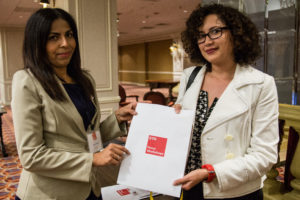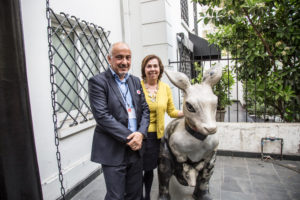Common Mistakes In Cross-Cultural Management: How To Avoid Them?
We talk a lot about all the successful examples of cross-cultural management. Isn’t it time to talk a bit about some common mistakes, too?
Defining the problem is the first step towards a solution. Let’s seek for solutions together in the comments!

Mistake #1: Forcing the culture
International students are not the sum of their cultures. They are individual beings with their own belief systems, interests and life stories. After all, most of them grew up on the Internet and can relate to a young person from another continent more than they would to their own grandma. So, don’t make cultural nights a must. Don’t ask everyone to sing national songs and dance national dances. Some students – gasp! – don’t even know how to make the signature meal of their country!
You must realize that sometimes is better to do nothing than to force the culture. Allow individuals to flourish: ensure that they have enough opportunities to share their stories, try out new things and form new relationships. Let them simply be themselves and you will see the most natural emanation of culture and diversity.
You never know – they may try cooking their national dish just because they want to be nice and share something special.
Mistake #2: Providing the templates
Not everyone can sing, dance or cook. And far from every student thinks that these are precisely the activities that represent their culture. Having a national song singing contest makes sense only if your university actually specializes in music.
Culture can mean so many different things to different people. For example, it can be family traditions, outdoor activities or a specific way of using language. Someone may feel the most connected to their national psyche on All Saints Night, while others can only feel that way on a hockey arena. Every way of representing a culture is perfectly adequate as long as it is sincere. Providing templates of cultural activity robs students of their ability to critically assess what exactly their culture means to them.
Make sure that cross-cultural connections happen not on specific days, but in daily life. Your international students should feel comfortable making their cultural traditions part of daily life on campus, without disturbing the others.

Mistake #3: Avoiding the conflict
Cultures clash. That’s kind of their thing. You cannot put together hundreds of people that come from different social, cultural and economical backgrounds and hope that everything will go smoothly. Especially if they are young people trying to figure out what they believe in and what is their identity.
People will get upset or confused. Some of them will have prejudices. Others will have direct or indirect experiences. One student may be led to believe in a certain stereotype by their family or friends. Another may have a misguided way of their own. All these things happen.
The worst solution here would be to ignore the situation and pretend that you don’t see the elephant in the room. Avoiding conflict means avoiding discussion. Seek ways to address cultural issues with care, respect and open mind. Don’t stop after hitting a brick wall – cultural understanding is a marathon, not a sprint.
Mistake #4: Skipping the meaning
Culture is a complex, multilayered and ever-changing mechanism. Taking out just one element of it – may it be music, food or a flag – turns it into a simplistic, two-dimensional copy of the rich and versatile creation it was before. That is why adding a burrito on the menu in the cafeteria on Cinco de Mayo celebration is borderline offensive, even with all the best intentions in mind.
Think about all the stereotypes about your own country. Would you like to be seen only in this light? Would you say that these stereotypes represent you as an individual or a member of the diverse community you come from?
Every cultural practice on campus must be understood in its context and introduced by people that know what they are talking about. So, ask your current international student body for help. Involve them in creating a diverse campus where different cultural traditions intertwine and support each other.
In conclusion, would you agree that the majority of mistakes on campus are the result of poor execution, even with the best of intentions? What is your way of resolving such conflicts?
Comment section is below, tell us your opinion!










































